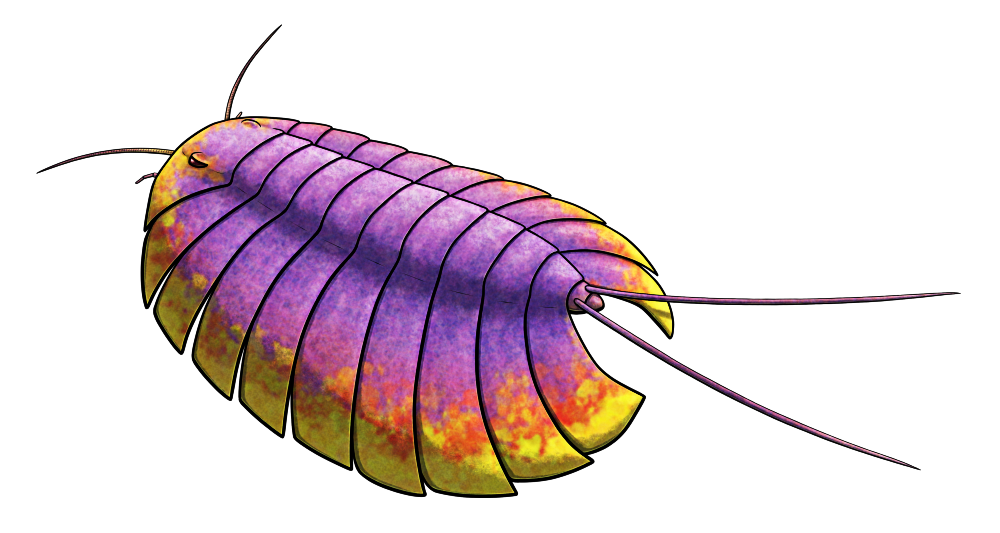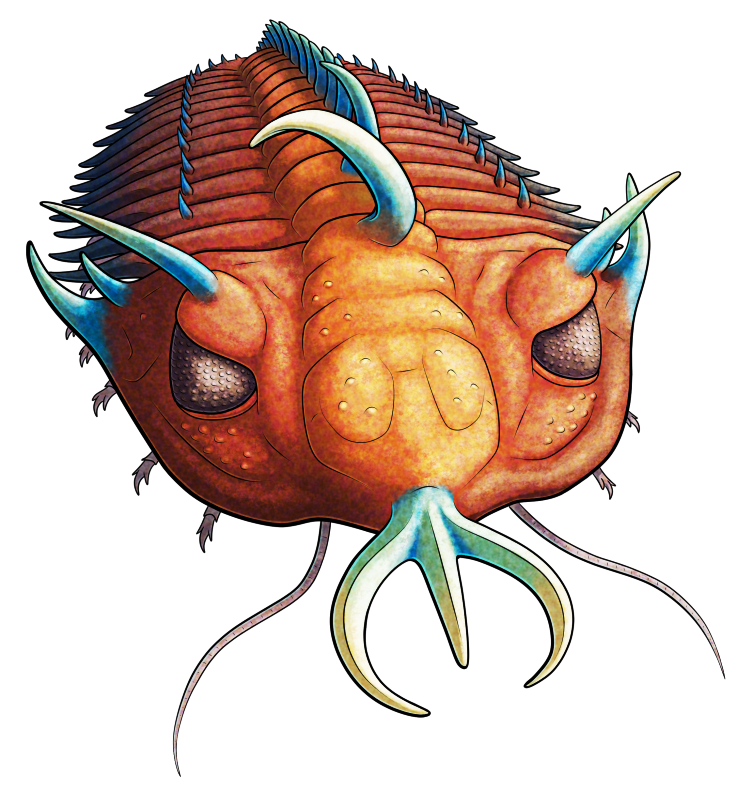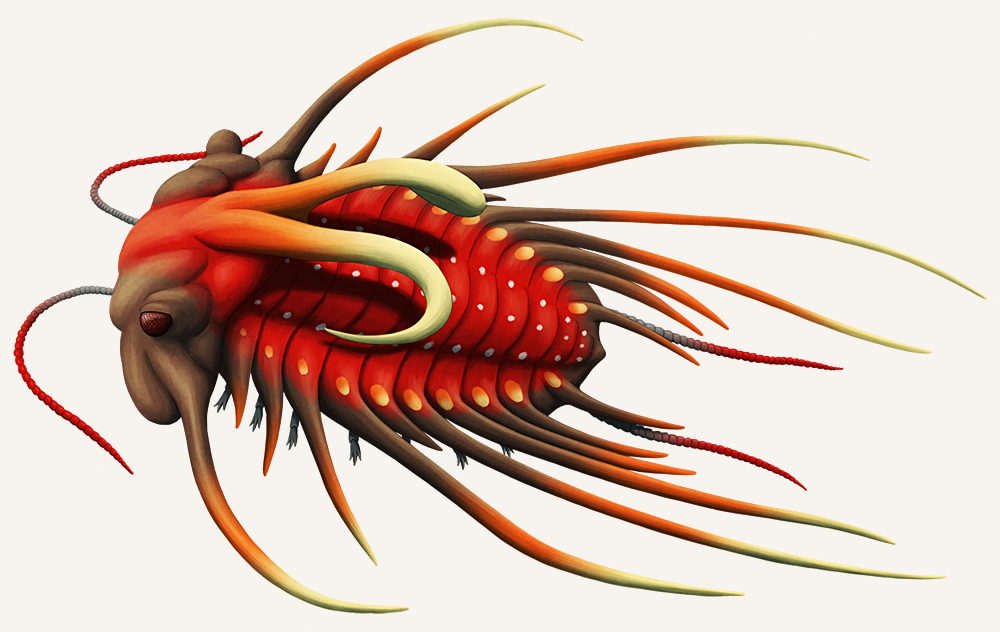Although Triopus draboviensis here might look like an isopod or a trilobite, this small arthropod was actually part of a rather rare group called cheloniellids.
Known from the early Ordovician to the early Devonian (~480-408 million years ago), only about 7 different species of cheloniellid have been described so far. Their evolutionary relationships were uncertain and controversial for a long time, but currently they’re thought to be distant cousins of trilobites within the Artiopoda.
Living in what is now Czechia during the late Ordovician, about 460-450 million years ago, Triopus is only known from two partial fossils. It was around 4cm long (~1.6″), and like other cheloniellids it had a body made up of wide radiating exoskeleton segments that fully covered its legs, and probably also a pair of whip-like appendages at the rear.
Its body was more domed than those of its relatives, who were generally very flattened, suggesting it was specialized for a slightly different lifestyle or habitat. Without any preserved appendages it’s not clear what its ecological role was, but since other cheloniellids had horseshoe-crab-like feeding structures it may have been a similar sort of generalist, preying on small invertebrates and scavenging carrion on the seafloor.



